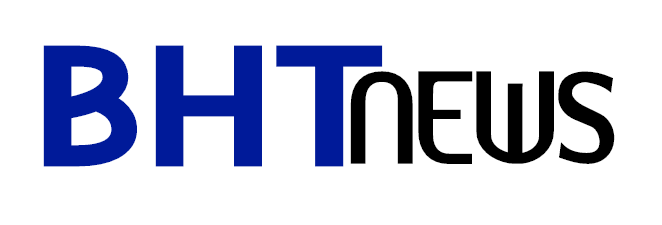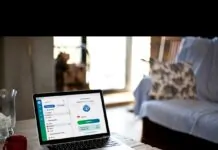When paying an individual or a bill, you can opt to fill out a money order. With money order, you don`t have to carry cash or use a credit card or debit check. It`s a paper document instructing the bank to pay certain amounts of money.
So, things will be easier for you if you learn to write a money order. Filling out a money order properly is a guarantee that you can receive and send payments faster.
Table of Contents
How to Fill Out a Money Order?
Here is a step-to-step guide you ought to follow;
This is an easy to follow procedure that includes the following;
- Filling in the name of the recipient
- Add the purchaser`s address
- Include an account number or a memo
- Write down your signature
1. Write Down the Name of the Recipient
If you are filling in a money order, then there must be a recipient. The recipient is the person /organization who is supposed to receive the money. You write his/her names on the section starting with “pay to the order of”
This section is important in that the money will be sent to the right person or company. So, you should be keen to avoid making spelling mistakes while writing the name. That way, the recipient won’t have a hard time cashing it.
2. Add your Address in the Purchaser Part
While filling out a money order, you are the purchaser. That section requires you to fill in your address. This helps the recipient to reach you easily if need be. They may have issues or questions that require your attention. With your address filled in, this makes everything easier. At times you may be required to provide your full name.
3. If you are Clearing a Bill, Provide Your Account Number
This one applies to individuals who fill out a money order to pay a particular bill. There are orders with account or payment for number. So, by filling the account number, the account is ascribed to the payment.
4. Make Sure You Assign
At the bottom, you will see the purchaser`s signature section. The money order is never considered official without your signature. However, do not sign the back, that’s the section for the receiver`s signature.
5. Keep the Receipt
The receipt is important in that it’s an evidence of payment. Therefore, you should always keep the receipt safe. Should a problem arise, you will be on the safe side if you have the receipt with you.
Note, filling out a money order properly is the easiest way of transferring money. It can`t be compared to cheques, carrying cash, or using a personal bank. This is because, with the money order transaction, you are issued with a receipt which you can keep as a proof of payment. Also, the recipient will be at ease since they are assured of getting the funds.
Why Should You Use a Money Order?
In a money order, the purchaser is issued with a receipt. As a result, this method is preferred by most institutions. This is because they are safer over cheques or cash. For instance, personal cheques require the routing number of the account holder. Also, with personal cheques, you must provide a bank account number.
Hence, such personal information is exposed to fraudsters and they may use the details provided to create or sign fraudulent cheques. However, this is not the case with money orders as personal information of the purchase is not included.
Here are the Advantages of Filling Out a Money Order
- It is safe since it does not require personal information like bank account number and the bank`s routing number.
- Money orders are also deposited in the bank at zero fees
- The recipient is free to cash the order in a credit union or a local bank. Hence, they don’t have to go to the order issuer to cash it.
- Money orders are issued from a different country and the recipient will cash it in his country
What are the Disadvantages of Using a Money Order?
- There are somehow challenging to track, unlike the personal cheque. For instance, finding out if the money order was cashed may require forms and this takes weeks.
- Cashing money from a money order incurs extra fees
- Though not common, some money orders are fraudulent. Hence, you should always be cautious.
Where Can I Get a Money Order?
There are different places where you can get your money order. These places include;
- Credit unions or banks
- Western union
- Pharmacies and large stores this includes CVS, Kmart, and Walmart
- The Post office
- Grocery stores such as Food Lion, Hy-Vee, Kroger, Meijer, Giant Eagle and so on
- Convenience Stores such as Super Stop, 7-Eleven, Super Stop, Kwik Trip, and ShopRite among others
Most money orders from companies and stores are from MoneyGram or they could be linked to a partnership with Western Union.
When Can I Use a Money Order?
Money orders are considered the simplest methods of sending payments. They are stress-free and very fast as well. Also, they are convenient especially if its large amounts of money involved. It’s an excellent way of assuring the recipient that they will get their money. This is because the money order is paid upfront. It`s for this reason why money order is preferred for payments such as apartment deposits or credit card bill.
Additionally, it’s quite difficult for anyone else other than the intended recipient to cash or deposits a money order. If by any case you do have a bank account, it is still possible to send a money order. The only condition is to fill inappropriately and afford the payment. Note, your recipients do not necessarily need a bank account too.
Conclusion
To sum up, if you are not comfortable carrying cash or using a cheque to pay someone or the bills. A money order is a way to go. You just have to follow this guide while filling in the money order. It is safe and faster.
Also, you get a receipt to keep and produce in case any problem arises. Filling money order is simple and anyone can fill in a money order. But be careful not to make any mistakes while feeling in the name of the recipient.




















